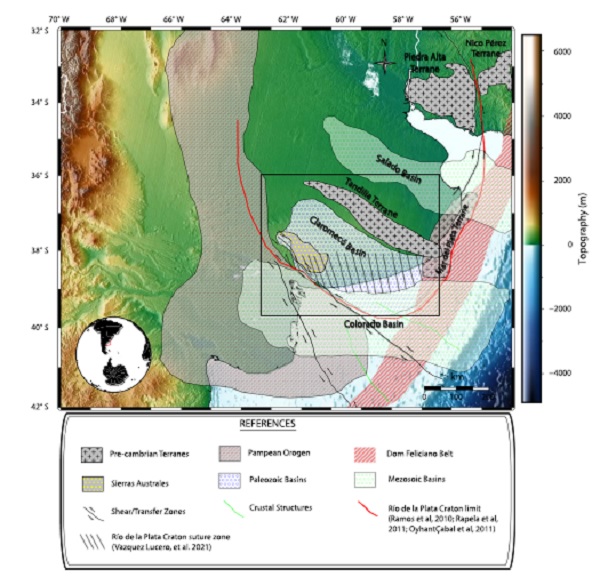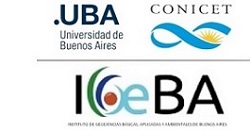3D thermal and rheological models of the southern Río de la Plata Craton (Argentina): implications for the initial stage of the Colorado rifting and the evolution of Sierras Australes
Autores:
S.E. Vazquez Lucero, F. Ibarra, M.L. Gomez Dacal, C. Prezzi, J. Bott, M. Scheck‑Wenderoth, H. Vizán
Año de la publicación:
2 022
Revista:
International Journal of Earth Sciences · May 2022
Abstract:
We present 3D thermal and rheological models of a key intra-plate locality of South America: the southernmost limit of the
Río de la Plata Craton area (which encompasses the Claromecó Basin, the Sierras Australes, and the Colorado Basin). Both
models were calculated on the basis of a previously published 3D lithospheric scale density model, after the population of
the different units with thermal and rheological properties. Firstly, the steady-state conductive thermal field was modelled
using different thermal properties in accordance with the assumed lithological composition of the units. Moving forward,
the strength distribution was calculated considering the resulting thermal field and published rheological properties for
common rock types as input for the different layers that compose the 3D density configuration of the area. Our main results
suggest that the thickness and composition of the crust exert a first-order control on the present-day thermal field of the
area and, subsequently, on the lithospheric strength. Particularly, we identified a rheologically weak lithospheric zone that
coincides with previously proposed inherited Paleozoic structures of Gondwana. This inherited lithospheric fabric could
have controlled the opening of the Colorado Rift Basin during the early Late Jurassic. In that sense, the present day high
strength of the Rio Negro and Colorado transfer zones associated with the mafic infill of Colorado rifting in the Mesozoic
suggests that the weak zones should have necessarily been developed during (at least) Paleozoic to early Mesozoic times.
This supports the hypothesis that the reactivation and interaction of the latter with the Gondwanic weak lithospheric zone
could have deformed and uplifted the Sierras Australes during the Gondwanides Orogeny.
Imagen:

